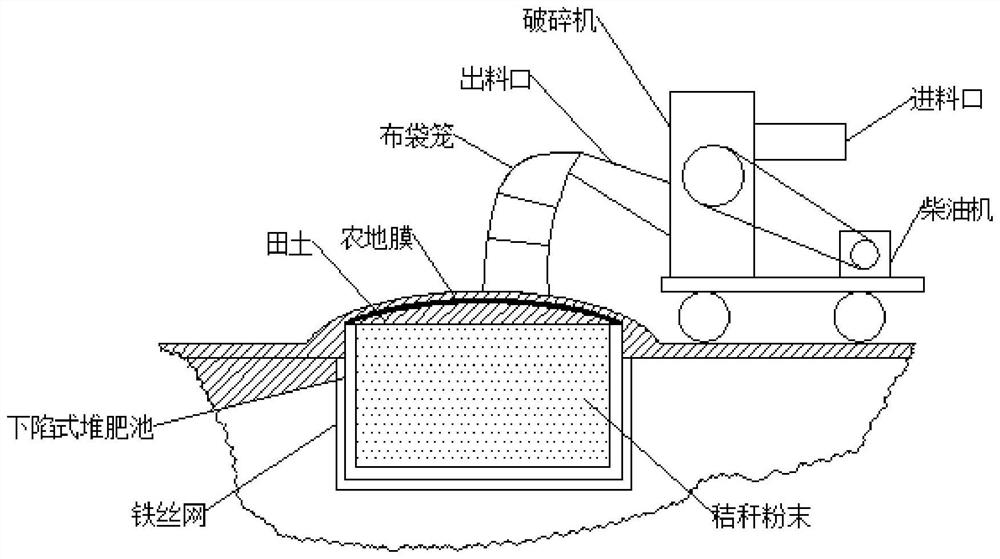Method for returning crop stalks to field
A technology of straw and straw powder, which is applied in the field of straw returning to the field, can solve problems such as the adverse effects of germination and growth, the inability to achieve the effect of fertilizing the field, and the side effects of crop growth, so as to eliminate the use of chemical fertilizers, save manpower and material resources, and planting costs , the effect of protecting the environment
- Summary
- Abstract
- Description
- Claims
- Application Information
AI Technical Summary
Problems solved by technology
Method used
Image
Examples
Embodiment
[0047] This example provides a method for returning straw to the field, which is implemented on the edge of a paddy field with an area of 1 mu. The schematic diagram of its implementation is as follows figure 1 shown.
[0048] First of all, according to the size and shape of the land, it is necessary to select a suitable corner of the field edge while minimizing the impact on farming according to local conditions, and make a sunken compost of about 4m long x 1m wide x 1m deep for one mu of land Pool, the specific production method of compost pool is as follows:
[0049] Use an excavator to dig out an earthen pond that is about 10cm larger than the size of the required composting pond, use a bucket to pat the soil around and at the bottom, trim the shape of the pond, and then use barbed wire to make the overall structure, and put the structure made of barbed wire into the In the earth pond, pour cement into a cement pit with a wall thickness of 9-10cm, and polish the four wa...
PUM
| Property | Measurement | Unit |
|---|---|---|
| thickness | aaaaa | aaaaa |
| thickness | aaaaa | aaaaa |
| particle diameter | aaaaa | aaaaa |
Abstract
Description
Claims
Application Information
 Login to View More
Login to View More - R&D
- Intellectual Property
- Life Sciences
- Materials
- Tech Scout
- Unparalleled Data Quality
- Higher Quality Content
- 60% Fewer Hallucinations
Browse by: Latest US Patents, China's latest patents, Technical Efficacy Thesaurus, Application Domain, Technology Topic, Popular Technical Reports.
© 2025 PatSnap. All rights reserved.Legal|Privacy policy|Modern Slavery Act Transparency Statement|Sitemap|About US| Contact US: help@patsnap.com

